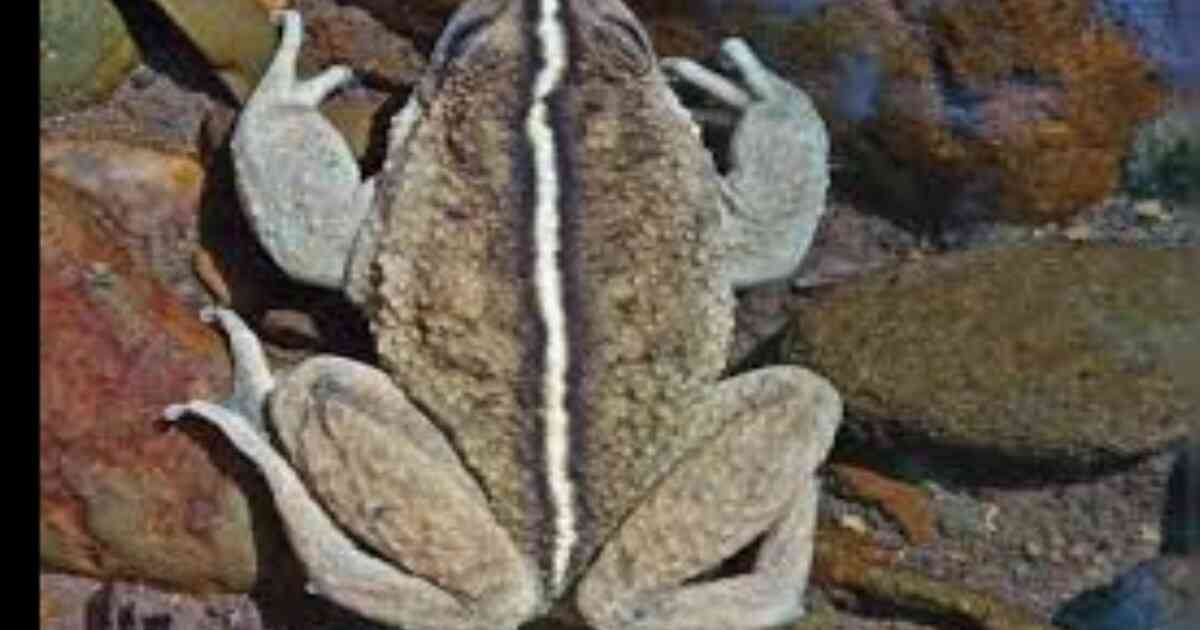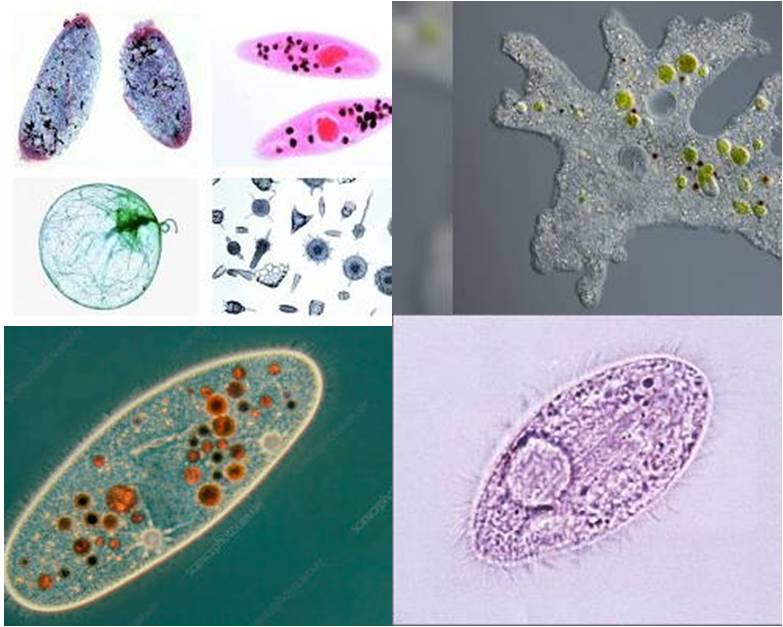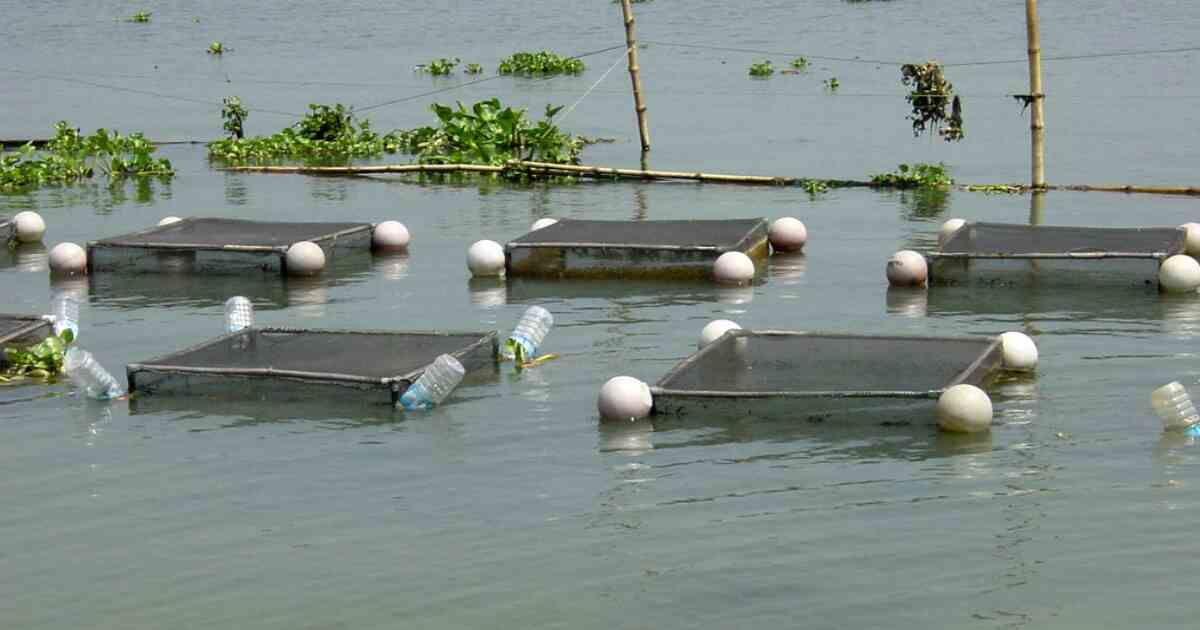Cage Culture of Freshwater Fishes in Reservoirs: Cage culture practice has gained popularity among fish farmers due to its various advantages, including enhanced fish growth, reduced disease risks, and minimal environmental impact. In this article, we will explore the essentials of cage culture, fish species suitable for this system, feeding and nutrition management, water quality considerations, health and disease management, harvesting techniques, and more.
What is Cage Culture?
Cage culture, also known as net pen culture, involves confining fish in large floating cages submerged in natural water bodies such as reservoirs. The cages are typically made of sturdy materials like nylon, and they provide a controlled environment for fish growth. The system allows water to flow freely through the cages, providing the fish with a natural habitat while enabling farmers to manage feeding and monitoring efficiently.
Cage Culture of Freshwater Fishes in Reservoirs
Cage culture refers to the practice of farming fish in enclosures (cages) that are placed in natural water bodies such as reservoirs. This method is particularly effective in maximizing space and producing fish in environments with limited land area. Here’s an overview of the cage culture process for freshwater fishes in reservoirs:
1. Understanding Cage Culture
Cage culture is essentially an aquaculture method where fish are confined in floating or submerged cages within a natural body of water. The cages allow fish to grow in a controlled environment while being exposed to natural water conditions such as temperature, oxygen, and current. The key advantage is the reduced need for land-based infrastructure compared to traditional ponds.
2. Choosing the Right Location
Selecting a suitable location within the reservoir is crucial for the success of cage culture. Key factors to consider include:
- Water Quality: The water should be free from pollutants and have optimal levels of oxygen, pH, and temperature for the fish species being farmed.
- Depth: The water body should have sufficient depth, typically 5 meters or more, to ensure the fish have enough room to swim and grow.
- Water Flow: Moderate water flow is essential to prevent stagnation and ensure the cage is adequately oxygenated.
- Distance from Shore: The cage should be placed far enough from shore to avoid contamination and ensure the fish are safe from predators.
- Access: Ensure the location is easily accessible for maintenance, feeding, and harvesting.
3. Types of Cages for Freshwater Culture
- Floating Cages: These are the most common and consist of a framework of pipes or floats that support the fish enclosure above the water surface. They are easy to install, maintain, and monitor.
- Submerged Cages: These are used in deeper waters and remain submerged. They are more difficult to manage but can be ideal for certain species that prefer deeper, calmer waters.
The materials used for the cage construction must be durable, resistant to corrosion, and able to withstand environmental stresses like wind and waves. Common materials include:
- Netting: Usually made of high-density polyethylene (HDPE) or nylon.
- Frames: Steel, aluminum, or plastic tubing is used for the frame.
- Floats: Made from PVC, HDPE, or other buoyant materials.
4. Fish Selection for Cage Culture
The species of fish chosen should be suited to cage culture in reservoirs. Some popular freshwater fish for cage culture include:
- Tilapia: Hardy, fast-growing, and tolerant of various water conditions.
- Catfish: Prefers deeper, slower-moving waters and does well in cages.
- Trout: Requires cool, well-oxygenated water, making it suitable for colder climates or high-altitude reservoirs.
- Carp: These are robust fish that can thrive in a range of conditions.
The choice of species depends on local water conditions, market demand, and the specific requirements of the fish.
5. Stocking the Cages
Stocking density is a critical factor in cage culture, as it affects growth, water quality, and the risk of disease. Optimal stocking density should balance efficient fish growth with sufficient space for each fish to move freely.
- Acclimatization: Before stocking the cage, the fish should be acclimatized to the reservoir’s temperature and water conditions to reduce stress and enhance survival rates.
- Gradual Stocking: Start with a small number of fish and gradually increase as you monitor the water quality and fish health.
6. Feeding and Care
- Feeding: The fish should be fed high-quality, species-specific commercial feed. The feeding schedule will vary depending on the fish’s age, size, and water temperature. Feeding should be done regularly, ensuring that uneaten food is minimized to prevent pollution.
- Monitoring Growth: Fish growth should be tracked to adjust feeding and ensure that the fish are growing at the expected rate.
- Water Quality Management: Oxygen levels, temperature, pH, and ammonia concentrations should be constantly monitored. Low oxygen levels can cause stress and disease outbreaks. Aeration systems may be used to ensure sufficient oxygen supply in the cage.
7. Health Management
Fish health is a critical part of cage culture, and disease management is necessary to ensure high survival rates. Some key practices include:
- Disease Prevention: Use high-quality feed, maintain optimal stocking densities, and ensure that cages are cleaned regularly to prevent disease outbreaks.
- Monitoring: Regular health checks should be conducted to detect early signs of disease, parasites, or stress.
- Quarantine: New fish should be quarantined to prevent the introduction of disease to the main population.
8. Environmental Management
- Waste Management: Fish excreta and uneaten food can accumulate around the cages and cause water pollution. Waste should be managed by placing the cages in areas with sufficient water flow to dilute the waste or using filtration systems.
- Predator Control: Birds, larger fish, and other animals can pose a threat to the fish in cages. Netting or protective barriers can be used to keep predators out.
9. Harvesting
- Timing: Harvesting should be done when the fish reach marketable size. The time to reach harvest size varies by species, environmental conditions, and feeding strategies.
- Techniques: Fish are typically harvested using nets or special mechanical devices designed to safely remove the fish from the cage without injury.
10. Regulations and Permits
Before starting cage culture in a reservoir, it is essential to understand and follow local regulations. These might include:
- Water Use Permits: Ensure you have the legal right to use the water for aquaculture.
- Environmental Impact Assessments: Some regions may require environmental assessments to determine the potential impacts of cage culture on local ecosystems.
- Fish Health and Hygiene Regulations: There may be regulations governing the management of fish health, including disease control and reporting.
Benefits of Cage Culture:
- Maximized Space: Cage culture can increase fish production without needing additional land.
- Reduced Land Use: This method utilizes natural water bodies and is ideal for areas with limited available land.
- Efficient Management: Cages can be managed more easily, and conditions such as feeding, water quality, and fish health can be controlled more effectively.
Challenges of Cage Culture:
- Water Pollution: If not properly managed, the cages can contribute to water pollution, affecting the reservoir’s ecosystem.
- Predators: Birds, large fish, and even other animals may attempt to prey on the fish, requiring additional control measures.
- Maintenance: Cages require regular maintenance, including cleaning, checking netting for holes, and monitoring the structural integrity of the cage.
By managing these factors carefully, cage culture in freshwater reservoirs can be a sustainable and profitable method of fish farming.
Conclusion
Cage culture of freshwater fishes in reservoirs offers a sustainable and economically viable method for fish farming. By implementing proper cage design, site selection, feeding management, and disease control, fish farmers can achieve successful results and contribute to the growing demand for seafood. Embracing cage culture with responsible practices will ensure a brighter future for aquaculture and our planet.
Read More: Fish Farming
Maharashtra Fish Seed Production Centre (MFSPC)
Frequently Asked Questions (FAQs)
What are the benefits of cage culture in reservoirs?
Cage culture offers several benefits, including efficient land utilization, reduced environmental impact compared to open-water farming, and the ability to control feeding and monitoring, resulting in better growth rates.
How can I prevent overpopulation in fish cages?
To prevent overpopulation, regular monitoring of fish density is necessary. Culling or transferring excess fish to other cages or ponds can help maintain an optimal stocking density.
What are the environmental impacts of cage culture?
When managed properly, cage culture can have minimal environmental impact. However, improper waste management and overstocking can lead to water pollution and habitat degradation.




